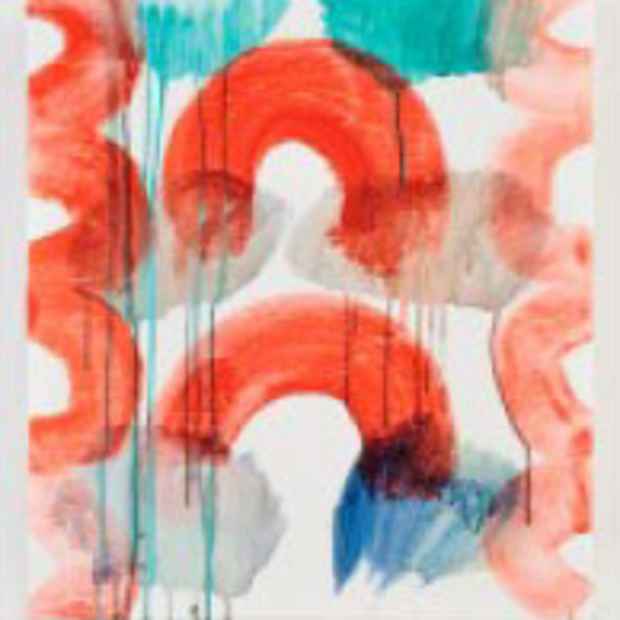"Surfaces, Supports." Exhibition
Storefront Ten Eyck

This event has ended.
Though five decades old, this quote by Jiro Yoshihara, founder of the Japanese avant-garde artistic movement Gutai, seems to anticipate this exhibition, which examines the practices of two contemporary American painters, Tatiana Berg and Evan Nesbit, and their shared affection for material. The exhibition's title is adapted from the eponymous French artistic movement of 1960s and 70s that, like Gutai before it, shares many of the same concerns including a preoccupation with materiality, especially that which can be considered non-traditional, a sensation of instantaneousness and informalism, and the importance of gesture. The works of Berg and Nesbit fall within this continuum and, at first glance, appear surprisingly related to one another, particularly in light of their East Coast-West Coast divide. Beyond connections to these previous movements, their paintings share many qualities: a strange sense of humor, an exuberant, rich, and sometimes borderline psychedelic palette, various Pop-influenced sensibilities, and a devotion to paint and process.
There are countless ways to paint a painting. Throughout Berg's corpus, one sees canvases made by slashing, as in Green Valentine (2012); spraying, as in Minor Coastal Flooding (2012); or applying various coats of paint, some watered down to nearly transparent and some thick and opaque, fingers dragged through the surface, as in X (2012). In the case of Nesbit, many of his works are created by applying layer upon layer to the reverse side of the canvas. The colors are pushed into one another, sometimes barely staining and sometimes thickly oozing through the surface of stretched burlap or wool, as in works such as Between Trees or Lewis (both 2012). Both bodies of work appear casual, even indifferent, but neither is. Like many of their artistic predecessors, including Supports/Surfaces or Gutai, both artists have moved past the distinct edges created by stretched canvas, to play with the relationship between pictorial and physical space, as can be seen in Berg's well-known "tent" paintings or in Nesbit's irregularly-shaped works on panel from the series, Porosity (2012).
Berg's work is fast, active, and smooth. She has described her work as being about an "indulgent painterly lust." For Berg, the space of the surface of a painting is "performative" and her process an energetic jumping back and forth from canvas to canvas. On the other hand, Nesbit's process is appears slower, with a strong relation to gravity. It feels organic, tactile, methodical, and philosophical. His distinctive method strives to subvert traditional picture making by painting the canvas the wrong way, pushing paint from the back towards the front. Perhaps the furthest distance between the two artists resides in their artistic approach to picture making, and in the diverse, often anomalous methods they employ. Despite their similarities and differences, both artists make paintings that take painting as the subject of their investigation and, in doing so, prove it remains audaciously alive.
Media
Schedule
from November 16, 2012 to December 23, 2012
Opening Reception on 2012-11-16 from 18:00 to 21:00